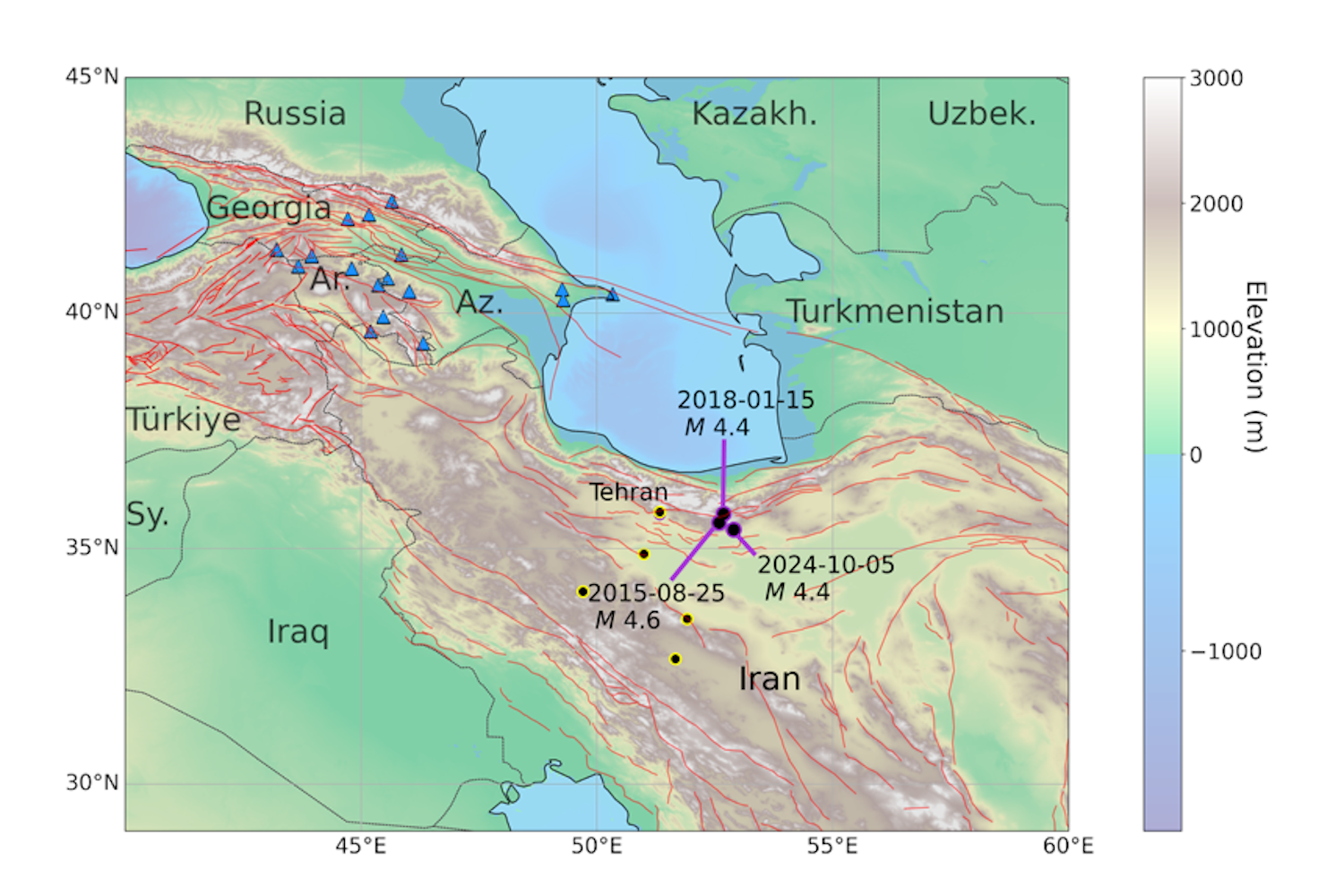Physical Address
304 North Cardinal St.
Dorchester Center, MA 02124
Physical Address
304 North Cardinal St.
Dorchester Center, MA 02124

On October 5, 2024, Iran suffered an earthquake. Just minutes later, rumors began to spread on social media that it was not a natural event, but the secret Iranian nuclear weapons test.
Now, the researchers, led by Johns Hopkins University, exposed these claims in a Ticket Posted on February 3 in the magazine Seismic. Their work reaffirms that the earthquake was a natural event, while highlighting the risk of scientific misinformation during the periods of geopolitical tension.
“There was a coordinated campaign and misleading information about this event, which strengthened the idea that this was a nuclear test, which is not often seen with an earthquake,” said Benjamin Fernando of Johns Hopkins University, who led the study in A. university statement. “This explains how geophysical data played an important role in the geopolitical crisis.”
Less than a year after Hamas’s attack on Israel, an earthquake 4.5 size (Comprehensive Nuclear Treaty Organization Organization I mentioned Its size 4.2) about 31 miles (50 km) southwest of the Iranian city of Siman, and 135 miles (216 km) east of the capital, Tehran.
After months, Fernando and his colleagues analyzed the event using the data available to the public from seismic surveillance stations. Seismologists are studying earthquake by recording their seismic waves from different points around the planet. They concluded that “the source of the (earthquake) is what we call the opposite mistake – a movement related to the crust of the earth that is crushed with the collision of Arabic and rolling paintings,” Fernando explained. Categorically exclude any connection between the event and a secret nuclear test. “The nuclear tests have completely different signatures, which are explosive,” added Fernando.
In addition, the CTBTO, which tracks nuclear tests around the world, confirmed this Similar earthquakes It occurred in the region in 2015 and 2018. Given its location between the Arab Tktonian and Convergents, it is known that Iran is a zone active in the seismic point of view.
However, rumors that seismic activity did not spread quickly on social media. According to the study, the first prime publication appeared on X less than 20 minutes after Trembler – a comment allegedly being caused by an Israeli blow to Iran. The first suggestion that the nuclear test caused the earthquake to appear 27 minutes of shaking. From there, distinguishing wrong information, with highlighting incorrect interpretations of seismic data and attracting conspiracy theories, as well as what the authors have identified as active misleading information.
Iran has become nuclear since last night.
They used the test bombs 10 km below the surface near Semnan to ensure minimal radiation exposure, which led to an earthquake of 4.6 recorded by Seismographs.#Iran #Khadenai #Nuclear #Israel pic.twitter.com/bssdfywdq5– Akhilesh Mar (@ akamar92) October 6, 2024
The Iranian nuclear program was at the center of tensions in the Middle East for decades, with Iran, which it maintains peaceful intentions while the United States and its allies are working to prevent it from developing nuclear weapons. The allegations of secret nuclear weapons tests are likely to lead to the region – and the world – to the edge of the war.
The challenge is to determine the active information in distinguishing strategic information on simple ignorance. However, “a pattern of great and sustainable participation with other users, and the knowledge of earthquake”, which appears in certain social media reactions “is likely to refer to a human author with some specialized knowledge of this article,” the researchers explained in the study, which indicates to Included effort to mislead.
Scientists also indicated in the new study, newspapers all over the world have soon chose the frenzy, including outlets in the United States, France, the United Kingdom, Israel, India, Pakistan and Zimbabwe. The researchers wrote that the main media in English “almost exclusively speculated (or enjoyed the idea) that this event may be a nuclear test.”
As a result, “these articles can be considered indirectly supporting the dissemination of wrong information by giving credibility and vision to the wrong interpretations of complex seismic data and failure to search for independent and expert verification.” On the other hand-and may not be surprised-the researchers found that the media in the Persian language was generally reported more accurately, and relying on local experts.
The researchers eventually made suggestions of how the scientific community would prevent such widely wrong information in the future.
“Scientific agencies can quickly issue detailed reports to confront wrong information,” Saman Karimi of Johns Hopkins, co -author of the study suggested. “Giving amplification to the contents coming from the verified scientific accounts can help reduce the misleading narration. This can be done by partnership between social media platforms and trusted earthquake scientists or agencies such as American Geological Survey.”
Ultimately, the study highlights how wrong scientific information can have severe consequences.